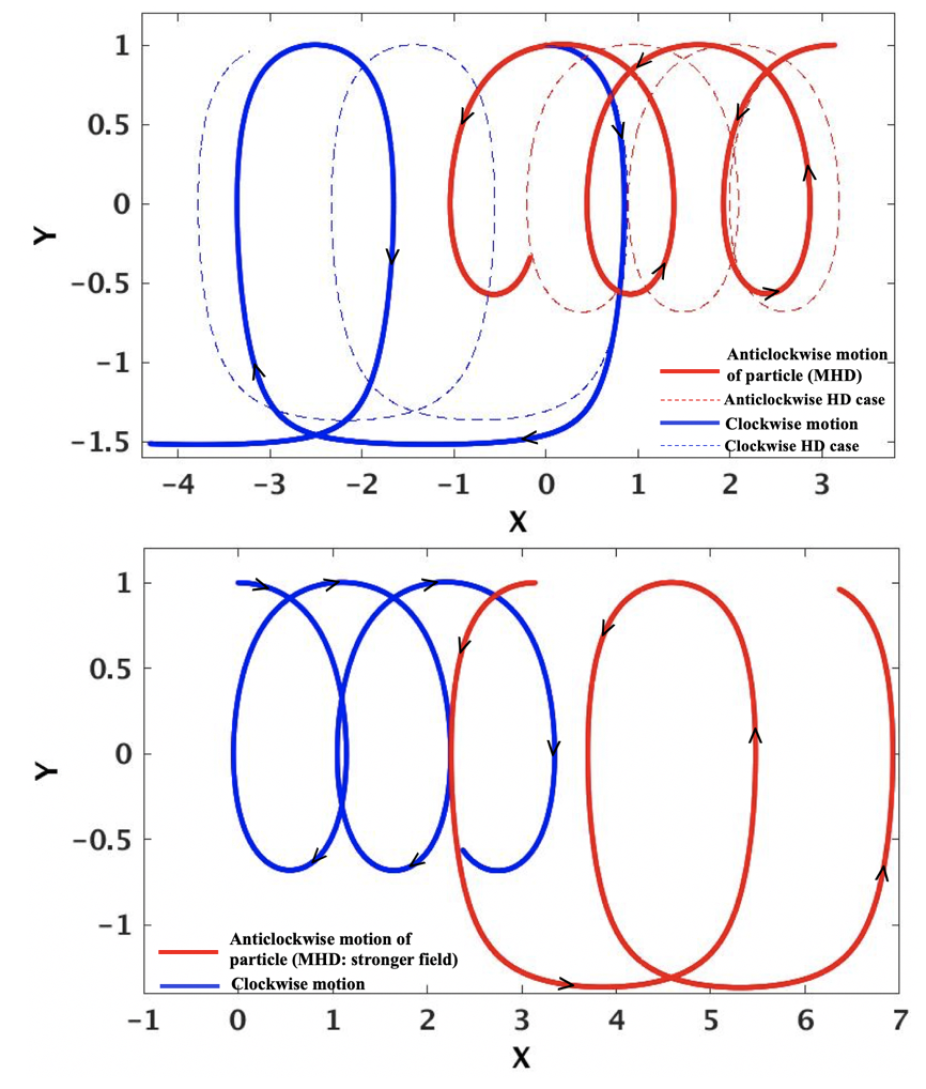Publication Name: Astrophysical Journal; First HAO Author's Name: Mausumi Dikpati
Evidence of the existence of hydrodynamic and MHD Rossby waves in the Sun is accumulating rapidly. We employ an MHD Rossby wave model for the Sun in simplified Cartesian geometry, with a uniform toroidal field and no differential rotation, to analyze the role of each force that contributes to Rossby wave dynamics, and compute fluid particle trajectories followed in these waves. This analysis goes well beyond the traditional formulation of Rossby waves in terms of conservation of vorticity.

Top: Particle trajectories for HD and MHD retrograde Rossby waves of same wavelength in x and same stream function amplitude, for both clockwise and anticlockwise flow starting points. Retrograde MHD Rossby waves (solid curves) are faster compared to corresponding HD Rossby waves (dashed curves). Bottom: Slow prograde MHD Rossby waves, which do not have HD counterparts.
Hydrodynamic Rossby waves propagate retrograde relative to the rotation of the reference frame, while MHD Rossby waves can be both prograde and retrograde. Fluid particle trajectories are either clockwise or counterclockwise spirals, depending on where in the wave pattern they are initiated, that track generally in the direction of wave propagation. Retrograde propagating MHD Rossby waves move faster than their hydrodynamic counterparts of the same wavelength, becoming Alfven waves at very high field strengths. Prograde MHD Rossby waves, which have no hydrodynamic counterpart, move more slowly eastward than retrograde MHD Rossby waves for the same toroidal field, but with a speed that increases with toroidal field, in the high field limit again becoming Alfven waves. The longitude and latitude structures of all these waves, as seen in their velocity streamlines and perturbation field lines as well as fluid particle trajectories, are remarkably similar for different toroidal fields, rotation, longitudinal wavelength, and direction of propagation.